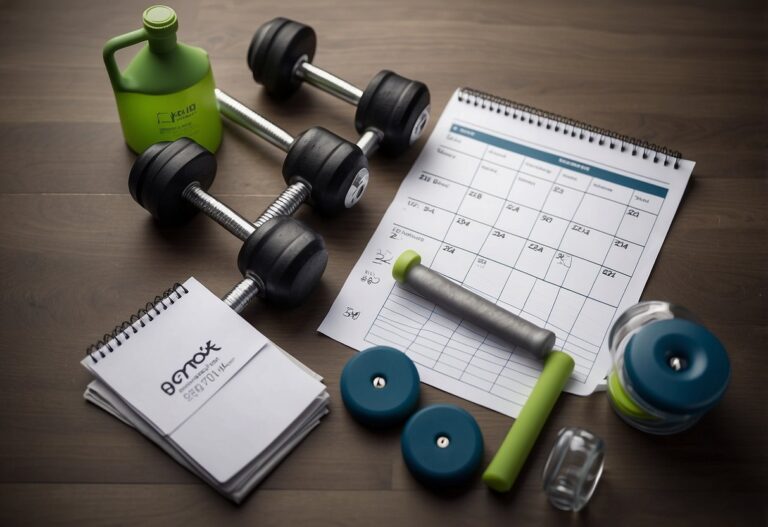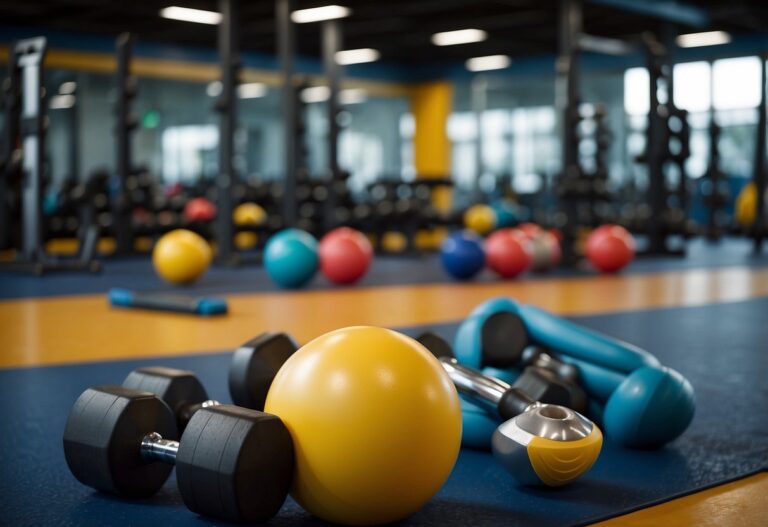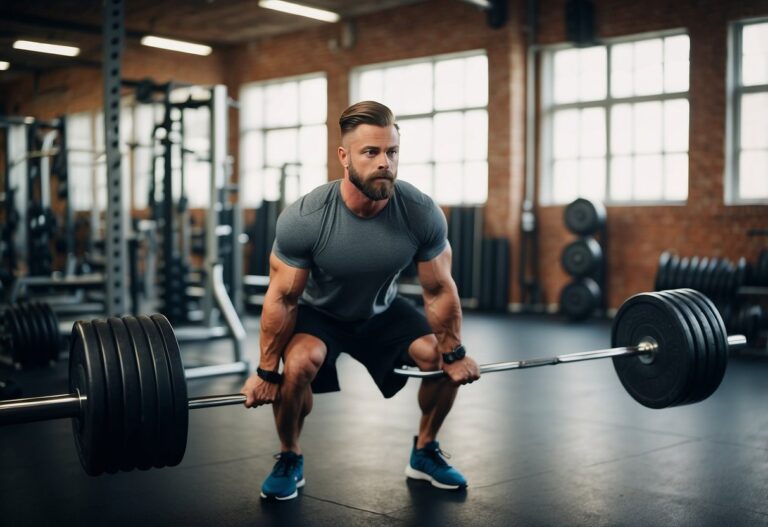Getting a flat stomach is a common fitness goal for many people. Whether you’re looking to fit into your favourite jeans or just want to feel stronger and more confident, focusing on your core can benefit your overall fitness. By incorporating effective workout routines and making consistent lifestyle changes, you can achieve visible results and improve your health.

When it comes to flattening your stomach, there’s no one-size-fits-all approach. Each person’s body responds differently to various exercises and diet tweaks. The key is to find strategies that work well for you, ensuring you stay motivated and enjoy the process.
Plank Exercises
Plank exercises are great for building core strength and achieving a flat stomach. To start, place your forearms on the ground with your elbows directly under your shoulders. Your toes should be on the ground, and your body in a straight line.
Engage your core by pulling your belly button towards your spine. This will help you maintain proper form. Keep your back flat and avoid letting your hips sag. For further details on form, it helps to check out some instructional guides.
Another variation is the high plank, where you place your hands on the ground under your shoulders and lift your body. Make sure to keep your body straight from head to toes. You can try multiple plank variations to target different muscle groups.
You might find it helpful to join a 30-day plank challenge to stay motivated. Remember to listen to your body and take breaks when needed. Happy planking!
Bicycle Crunches
Bicycle crunches are fantastic for working on your abs and obliques. They also help improve your overall core strength.
To do bicycle crunches, start by lying flat on the floor with your lower back pressed down. Place your hands behind your head and lift your feet off the ground.
As you twist your torso, bring one knee towards your elbow, while extending the other leg straight. Alternate sides like you’re pedalling a bicycle.
It’s important to keep your movements controlled. Focus on quality rather than speed to maximise the benefit. If you notice any neck or back pain, consider trying standing bicycle crunches.
Incorporating bicycle crunches into your workout routine can help you achieve a flat stomach. They engage multiple muscle groups, making them a powerful exercise for your midsection.
Leg Raises
Leg raises are fantastic for targeting your lower abs. Start by lying flat on your back with your legs straight and pointing up.
Place your arms by your sides and press your lower back into the floor. This helps to keep your spine safe and supported.
Slowly lower your legs towards the ground while keeping your lower back pressed to the floor.
If you feel your lower back start to lift, stop lowering your legs and hold that position.
You can also try different variations such as raising one leg at a time for a new challenge. Keep practising, and you’ll see great progress in your core strength.
Mountain Climbers
Mountain climbers are a fantastic exercise for achieving a flat stomach. They target your core, shoulders, and legs, providing a full-body workout. To start, get into a plank position, keeping your body straight and your arms shoulder-width apart.
Next, bring your right knee towards your chest and quickly switch to your left knee. It’s important to maintain a steady pace. This movement resembles climbing a steep hill, hence the name.
Including mountain climbers in your routine can boost cardiovascular endurance and strengthen your core. If you’re aiming for variety, consider integrating them with other exercises like plank or bicycle crunches.
Russian Twists
Russian twists are fantastic for your core. Start by sitting on the floor with your knees bent and feet flat.
Lean your upper body back at a 45-degree angle to engage your abs. Hold your hands in front of your chest or use a small weight for added resistance.
Twist your torso to the right, then to the left, keeping your movements controlled. Make sure to keep your back neutral to avoid strain.
Russian twists are great for targeting your obliques. They’re easy to do and can be modified to suit your fitness level. Add them to your routine for a stronger, flatter stomach.
Cardio Routines
Cardio exercises are great for burning calories and reducing belly fat. High-Intensity Interval Training (HIIT) involves short bursts of intense activity followed by rest. This can include sprints or jumping jacks.
Running or brisk walking also helps. Aim for at least 30 minutes a day. You can use a local park or your neighbourhood.
Cycling is another effective option. It helps with overall body toning and can be fun if you enjoy the outdoors.
Lastly, try skipping rope. It’s simple, effective, and can be done anywhere. Aim for short, consistent sessions to see results.
High-intensity interval training (HIIT)
High-intensity interval training (HIIT) is a fantastic approach to burning belly fat. It combines short bursts of intense exercise with periods of rest or lower-intensity activity. This method helps boost your metabolism and targets fat, especially around your stomach.
Imagine doing a series of exercises like burpees, jumping jacks, and high knees for 20-30 seconds, then resting for the same amount of time. This routine is effective and quick, often taking just 15-20 minutes.
One of the best parts of HIIT is that you can do it anywhere. You don’t need a gym and can use your body weight for most exercises. Plus, it’s adaptable for any fitness level. You can start with lower intensity and gradually increase as you get fitter.
For more ideas, check out these quick HIIT exercises for melting belly fat.
Abdominal Muscle Stretching
Stretching your abdominal muscles is essential to improve flexibility and reduce tightness.
A simple way to stretch your abs is by lying down on your stomach and placing your hands underneath your shoulders. Then, extend your arms and arch your spine backward. This stretch helps push your stomach and hips towards the floor and targets the lower abdominal region.
Another effective stretch is the standing lean back stomach stretch. Stand up straight, place your hands on your lower back, and gently lean backward. This stretch targets both the upper and lower regions of your rectus abdominis.
Incorporating these stretches into your routine can help you feel more relaxed and comfortable, especially after a workout.
Balanced Diet with Low Sugar Intake

To get a flat stomach, you should focus on a balanced diet with low sugar intake.
Eating too much sugar can lead to weight gain and belly fat. Try cutting back on sugary drinks and snacks. Opt for water or herbal teas instead of sugary sodas or juices.
Include more fruits and vegetables. They are low in calories and high in nutrients. Adding more fibre to your diet can help you feel full and reduce hunger.
Avoid processed foods. These often contain hidden sugars. Choose whole foods like lean meats, whole grains, and plenty of fresh produce.
Hydration

Staying hydrated is essential for achieving a flat stomach. Drinking plenty of water helps you feel full, which can prevent overeating. Aim for at least eight glasses of water a day.
Drinking water before meals can also aid in digestion and reduce bloating. It’s a simple trick that can make a big difference.
Consider cutting back on sugary drinks. These can add unnecessary calories and cause bloating. Opt for water or herbal teas instead. Adding a slice of lemon or cucumber can make plain water more enjoyable.
Remember, your body needs water to function properly. Staying hydrated supports your metabolism and overall health.
Understanding Belly Fat
Belly fat doesn’t just affect how you look. It can impact your health in significant ways, which makes understanding it crucial.
Types of Belly Fat
There are two main types of belly fat:
Subcutaneous Fat: This type lies just under the skin. You can pinch it, and it’s often found around your hips and thighs. While it affects your appearance, it’s generally less harmful than other forms.
Visceral Fat: This fat is stored deeper in your abdomen, surrounding your organs. It’s more dangerous because it increases the risk of health problems like type 2 diabetes and heart disease. Monitoring and reducing visceral fat is important for long-term health.
Knowing the difference between these two can help you target your efforts more effectively for a healthier lifestyle.
Causes of Belly Fat
Several factors contribute to belly fat:
Diet: Consuming high-calorie foods, especially those high in sugar and fat, can lead to weight gain. Processed foods and sugary drinks are common culprits.
Lack of Exercise: A sedentary lifestyle leads to fat accumulation. Regular physical activity helps burn calories and reduce visceral fat.
Stress and Hormones: High-stress levels can raise cortisol, a hormone that promotes fat storage around the belly. Managing stress through activities like yoga or meditation can help.
Genetics: Your family history can play a role. If your parents have excess belly fat, you might be more predisposed to it.
Sleep: Poor sleep patterns can disrupt hormones that control appetite, leading to weight gain. Getting enough quality sleep is essential for maintaining a healthy weight.
Considering these causes can guide you towards more effective solutions for reducing belly fat.
Effective Exercises for a Flat Stomach
Achieving a flat stomach involves a mix of cardio workouts to burn fat, strength training to build muscle, and core-specific exercises to tone the abdominal muscles. Combining these types of exercises will help you develop a lean and defined midsection.
Cardio Workouts
Cardio workouts are essential for burning the calories necessary to reduce body fat, including the fat around your abdomen. Engaging in activities such as running, cycling, or swimming increases your heart rate and promotes fat burning. Aim for at least 30 minutes of cardio, five days a week. High-Intensity Interval Training (HIIT) is particularly effective because it alternates short bursts of intense activity with rest periods, maximising calorie burn and boosting metabolism.
Try incorporating jump rope sessions or brisk walking into your daily routine if other cardio exercises feel too intense. Cardio not only helps with weight loss but also improves overall cardiovascular health, giving you more energy and stamina for your workouts.
Strength Training
Strength training builds muscle, which enhances your body’s ability to burn calories even at rest. Focus on exercises that target multiple muscle groups for the best results. Some effective strength training exercises include squats, deadlifts, and lunges. These moves engage your core while working on other areas, providing a double benefit.
Consider using weights or resistance bands to increase the intensity of your workouts. For instance, holding dumbbells while doing lunges can make the exercise more challenging. Strength training sessions should be done at least three times a week, with a rest day in between sessions to allow your muscles to recover and grow.
Core-Specific Exercises
Core-specific exercises concentrate directly on your abdominal muscles, helping to create definition and strength in this area. Exercises such as plank holds, bicycle crunches, and boat poses are particularly effective. Performing a variety of moves ensures that all parts of your core – including your obliques, transverse abdominis, and rectus abdominis – are toned evenly.
One great workout to try is the bicycle crunch, where you lie flat on your back, lift your legs, and pedal them in the air while touching your elbows to the opposite knees. Consistency is key, so aim to include core-specific exercises in your routine three to five times a week for optimal results. You can find more specific advice on exercises like the plank and boat pose at Medical News Today.
By combining these three types of exercise, you can effectively work towards a flatter, stronger stomach.
Diet and Nutrition Tips

Achieving a flat stomach is not just about exercise; it also involves making smart diet choices. Here are some diet and nutrition tips to help you on your journey:
Eating soluble fibre can help you feel full for longer. Foods like oats, apples, and beans are great sources. This type of fibre can also help decrease the absorption of calories and protect against the accumulation of visceral fat around your organs.
Chewing your food slowly can also make a big difference. Try chewing each bite at least 10 times before swallowing. When you eat slower, your body has more time to signal to your brain that you’re full, which can help prevent overeating.
High-protein foods, such as fish, lean meat, and beans, can be beneficial if you’re trying to decrease belly fat. Protein helps build muscle, and muscle burns more calories than fat, even when you’re at rest.
Make sure to keep your sodium intake in check. Consuming too much salt can cause water retention, which may make your belly look more bloated. Instead, focus on potassium-rich foods like bananas, spinach, and edamame.
Reducing your stress levels can also help. Stress can lead to the accumulation of belly fat by triggering the release of cortisol. Try activities like yoga, meditation, or even a daily walk to keep stress at bay.
For more strategies, you can explore these tips on eating soluble fibre and reducing stress levels.
Remember, small changes in your diet can add up to big results over time. Stay patient and keep consistent with your efforts.







